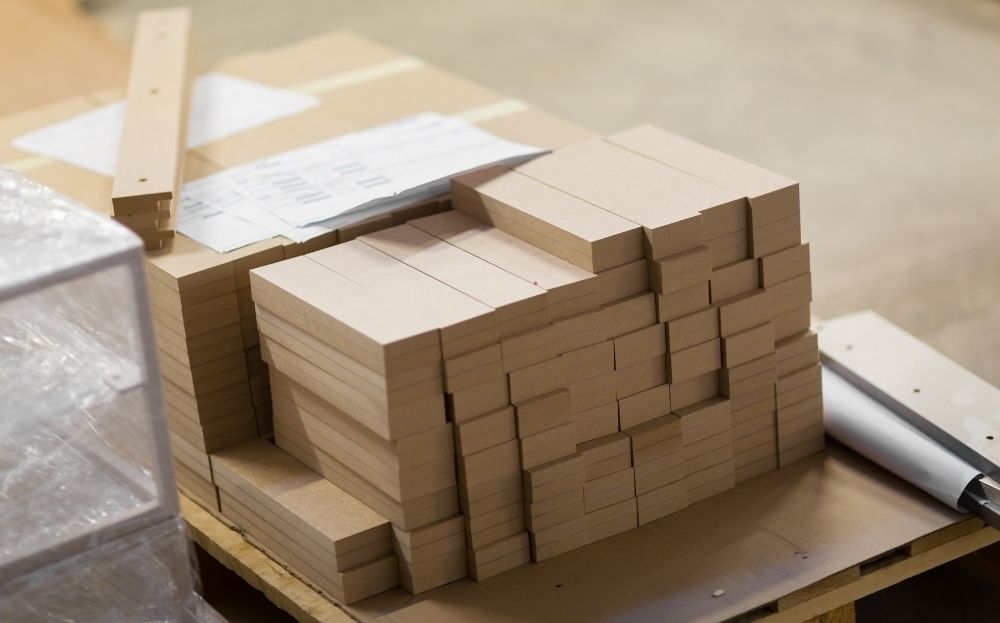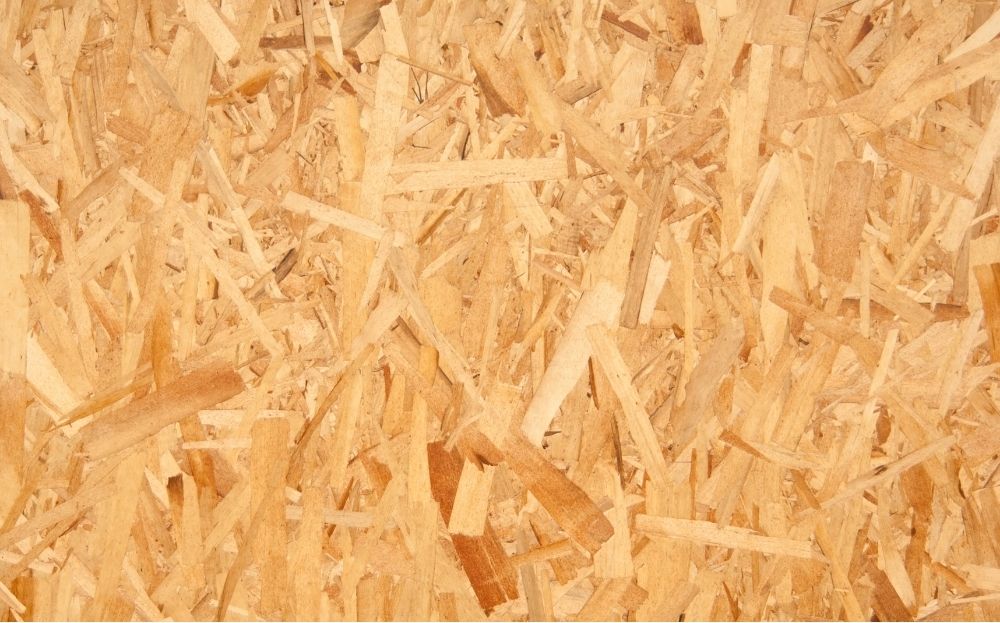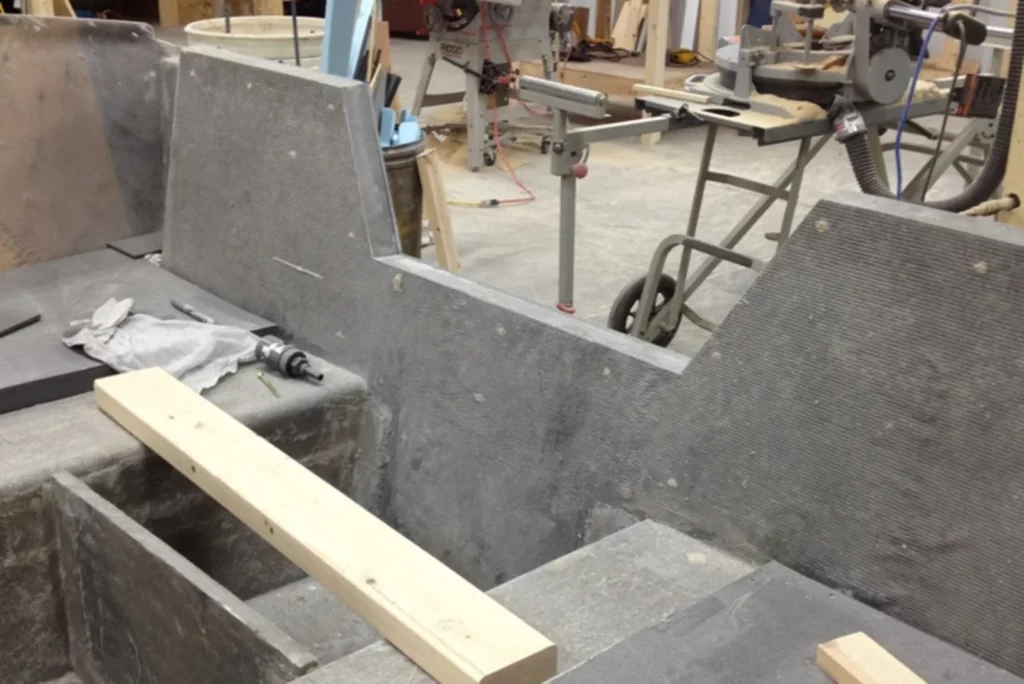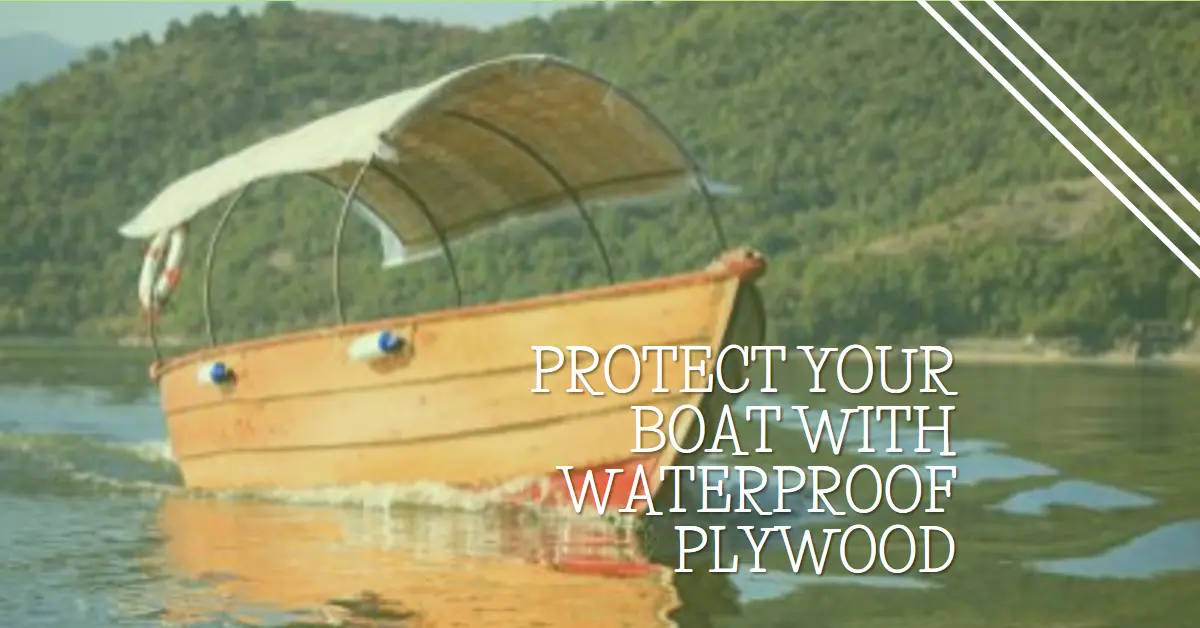When building boats and other structures that are going to go in the water, you need to use materials that are watertight and can withstand pressure.
For this, marine grade plywood is often used, but it can also be quite expensive. That’s why many people seek out marine plywood alternatives that are cheaper but just as viable.
The most common alternative is Medium Density Fiberboard (MDB) which is just as strong as plywood. After being treated with resin and sealant, it can also be water-resistant and withstand use in water.
Below we have more details on MDB and eight other alternatives that can be considered.
All of them have the strength and water-resistant qualities of marine plywood but with none of the cost, making them ideal for both individual and business construction projects.
Here are the materials that we cover on this page:
- Medium Density Board (MDB)
- Exterior Grade Plywood
- Fiber Cement Board
- Birch Plywood
- Ribbon Grain Plywood
- Wax Resin Fiberboard
- 3M Reinforced Polyurethane Foam Boards
- Thermo-Lite Board
- King StarBoard
Medium Density Board

Medium Density Board, also called MDB or Fiberboard, is one of the most popular alternatives to marine plywood and other boat construction materials.
It’s very strong and durable since it’s made from fibers that are bound together with wax resin. This makes the fiberboard stronger, able to withstand pressure, and more resistant to moisture.
As such, MDB isn’t made from 100% wood but it’s as good as most plywood you can get.
Fiberboard is made by separating softwood fibers and then mixing them with the resin, which is then cut into sheets, pressed, and heated to pack it all together.
When that process is done, the fiberboard is on par with plywood in many respects.
If MDB is too expensive or hard to acquire in your area, we have the rundown on eight other materials that are as strong and water-resistant as marine plywood below.
Exterior Grade Plywood
A great alternative to marine plywood is exterior grade plywood, which is similar but is made for general-purpose outdoor use.
This means it has a lot of the same strength and water-resistant properties that make marine plywood ideal for making boats and waterborne structures.
Also, nothing is stopping you from using exterior-grade plywood for interior uses too, there’s no limit on what you can use exterior-grade plywood for.
There is a problem, however, which is that exterior-grade plywood tends to have rough surfaces that are full of visible defects.
This is because it’s designed to be used for all sorts of jobs that don’t involve producing something visually satisfying, like a boat.
You can coat exterior grade plywood with waterproof glue and a sealant, and paint for coloring, and then it should be water-resistant too.
From there, it can be used for boat construction effectively. Even with a coat of sealant and paint on it, exterior-grade plywood can still have visible marks and imperfections on its surface.
Shop around for the best, smoothest plywood you can get.
Fiber Cement Board
Fiber cement board, or FCB, is another great plywood alternative that’s like MDB.
Instead of a fiberboard made purely from softwood, FCB is made by combining wood fibers with cement instead of the glue/resin that is usually used to bind them.
Naturally, the result is much stronger than MDB since hardened cement can take more punishment than resin.
It’s common for FCB to be used in the exterior walls of buildings and storage cabinets where a lighter material is required.
It’s a versatile material that can be used for many different construction projects including, you guessed it, boat building.
The greatest advantage FCB has is how light it is when compared to other wood-based materials.
Unlike other lightweight materials, which can be flimsy, the cement in FCB makes it solid and long-lasting. It’s also flexible, so it can be used for the curved sections of boats and other complex structures, along with interior walls.
Birch Plywood
Birch plywood is a cheaper marine plywood alternative that can be used for constructing boats. It is best used for the parts that are not under the water all the time since the plywood will degrade faster when submerged.
You should try to get birch plywood that’s made from B/BB grade timbers, which will typically come from North European birch trees.
European trees are more acclimatized to cold, wet weather and so they are much better for meeting water. They also have closer growth rings, making them more densely packed and durable.
Ribbon Grain Plywood
Ribbon grain plywood is another handy alternative for marine plywood. It’s named after the whirling, ribbon-like patterning on its wood grain if that wasn’t obvious.
Each sheet has vertical stripes that span the wood, making it more visually appealing than many other wood materials.
The natural wood cross-grains make it look like real wood when, in reality, it’s made from cores and veneers.
It’s also remarkably smooth, the polar opposite to the exterior grade plywood mentioned above. It doesn’t need to be altered after it has been installed, which will save construction time, effort, and money.
Along with looking and feeling good, it’s only a little less durable than marine plywood. It’s strong enough to get the job done, however, and it’s cheaper than marine plywood, so it’s a good tradeoff.

Wax Resin Fiberboard
Wax resin fiberboards can be used as an alternative to marine plywood sometimes.
The wax-resin treatment on these fiberboards goes a long way in making them suitable for use in boat construction. The fiberboard itself doesn’t have a high density but it can still put in the work.
Like many of the materials that we have covered, it’s not made entirely of wood. Instead, softwood fibers are mixed with wax resin, just like how medium-density boards are made.
The resin treatment makes the end product more solid and able to withstand pressure and impact.
Once bonded together, the material is cut into sheets, pressed, super-heated, then sold to customers just like you. The pressure and heat treatment ensure the sheets are as flat, even, and smooth as possible.
You may find fiberboards that have been made with hydrogen bonding instead.
This is where the wood fibers are bound together through a combination of pressure and encouraging hydrogen molecules to bond together within the wood.
When this happens, something called lignin in its wood fibers makes the sheet stronger. All you need to learn about lignin is that it is a natural agent within the fiber cells that bind everything together like cement.
Hydrogen-bonded materials are more expensive because each outcome is unique than resin treatment.
3M Reinforced Polyurethane Foam Board
3M offers a wide variety of tools and materials for construction and other practical jobs. Of the products in their catalog, their reinforced polyurethane foam board is the most suitable for building a boat.
It can be used as a marine plywood alternative that is light, resistant to rot, and can be used to create and maintain structure.
The boards should be the reinforced variety, which has fiberglass reinforcements that make the sheets stronger and more like marine plywood.
You can get the boards in different weight classes too, depending on what you need to build and how much weight the boat can handle.
The lightest boards weigh fifteen pounds for each cubic foot while the heaviest is twenty-eight pounds. Sheets measure four feet by eight feet.
If you’re looking for a flat alternative to marine plywood, you can’t do much better than polyurethane foam boards.
They are very straight, completely level, and won’t warp when faced with pressure and age. Even marine plywood suffers from warpage and chips will fall from it in time, but foam boards don’t have those problems.
They’re also resistant to corrosion and rotting, being made from advanced polymers that don’t get destroyed by the elements.
This is also because there is less moisture content in 3M sheets, which also helps them adhere to other surfaces better.
Thermo-Lite Boards
Another branded option is Thermo-Lite, from the Australian company SpaceAge Synthetics which is trying to introduce alternatives to plywood for many industries, including boat building.
Their proprietary boards are lightweight, durable, and won’t rot when exposed to the elements for long periods. For boating, that combination of properties is great for long-term use.

The boards can be used for a lot of DIY applications, so they’re great to have around when you’re building, refurbishing, or repairing things around the home. As such, they’re also great for working on RVs and boats, too.
While wood is absorbent, Thermo-Lite boards are non-absorbent so that they don’t warp and change with changes in temperature, which most woods and metals do.
They can also take a hit without breaking or changing shape.
Like with 3M boards, Thermo-Lite boards are sold in either sheets or kits made from pre-cut parts, and you have several options in how thick and dense they are.
Sheets measure 60” (1,510 mm) wide and 141” long (3,580 mm). Then you get to choose the thickness, which varies from 0.23” (6 mm) to 1.97” (50 mm).
As for density, it varies between 19.98 pounds (320 kg) per cubic foot and 39.95 pounds (640 kg).
King StarBoard Boards
Another brand claiming to have the next big alternative to marine plywood is King StarBoard.
They have experience in producing high-density polyethylene for marine uses, which they make alongside their marine plywood.
Who better to make a marine plywood alternative than people who have already made a name for themselves by selling it?
The brand uses something called K-Stran, a proprietary process that you won’t find anywhere else. Through this method, they can make sheets that are consistently flat, more so than natural materials like wood.
This makes them pleasant to look at and touch, and they won’t lose their color when the elements wear the sheets down. They have laminates over them that won’t peel away, preserving the material beneath.
The boards are also easy to work with, so anybody with woodworking tools can process the sheets and turn them into something workable for DIY and boat-building purposes.
Once installed, it should work out to be cheaper than using marine plywood or fiberglass sheets since they are easy to clean, refinish, and repair.
King StarBoard boards have matte finishes too, on both sides, so minor imperfections can go ignored.
When exposed to watery conditions, these sheets won’t warp, swell, delaminate, crack, splinter, or rot from moisture.
This makes them a great replacement for marine plywood and other boating plywood if you are seeking an alternative.
Waterproofing Ordinary Plywood

You may have some old plywood lying around and now you are asking yourself – ‘can I waterproof ordinary plywood?’
Fortunately for you, you can! While the cost will vary and may turn out to be more expensive than some of the alternatives listed above, it may be more convenient to convert normal plywood into marine plywood yourself.
This is possible because normal plywood and marine plywood are fundamentally the same, so you can change one into the other without messing up the material and destroying its effectiveness when at sea.
They are made with the same glues that hold the sheets together so, as long as you get high-quality plywood, they will be suitably moisture-proof and sealed.
From there, you need to further waterproof the material to take it to the same level as marine plywood.
You can use any of the following to waterproof a sheet of plywood:
- Epoxy Sealer – The most popular sealant that can be painted and sprayed. Sanding down the layer can also help it hold paint.
- Drying Oil – Soaks into the plywood and creates a thin coat, best for use in humid and high-moisture areas and lengthens the wood’s lifespan.
- Varnish – A mix of resin that adds a sealing layer without thickening the material, which can happen with epoxy sealer. Varnish is better used for above-water materials.
Step-By-Step Waterproofing
If you don’t know the steps involved with waterproofing your boat plywood, here we have detailed the process.
While this is how plywood is usually treated to become waterproof, your circumstances may require a different strategy, so you should always do your research.
1. Plywood Preparation
You need to prepare plywood before waterproofing it, otherwise, the treatment may not work. Clean the plywood by brushing debris away and cleaning any dirty spots with a dry cloth.
If there are rough spots and imperfections, you may need to use wood filler to repair any gaps. It’s hard to be waterproof if there’s a gaping hole in the material, after all.
If you do use filler, let it harden and wipe the sheet with a wet cloth to help the filler bond and remove any debris/dirt. Then you should lightly sand the plywood with sandpaper that is between 60 and 100 grit.
2. Applying Sealer
From here, you can brush on your sealer if that’s how you’re applying it. You can use a brush or a roller, either one should work fine, and add a second coat after waiting for the first one to dry.
Read labels for any products that you’re using – sometimes they might ask you to put on a third coat!
Similarly, read instructions carefully for spray-on sealants too. You can mess up the process if you don’t or, at worst, you could cause harm to yourself.
3. Drying Plywood
Whichever method of sealing you have used; you should wait for it to dry. This can take up to 24 hours and, if detailed in the instructions, you should wait for the entire time.
Once it has dried, you can install it. For boating, you’ll want to add sealer or properly nail the plywood to make sure it is watertight.
4. Sealing Plywood Edges
With some plywood sheets, the edges can be difficult to seal. When sealing the rest of the plywood, you should put multiple coats onto the edge and leave an hour between them.
The varnish will get soaked up by the edges of the plywood, so that’s why you need to throw several layers of sealant/varnish onto them until a proper layer can form.
Conclusion
Those are the best alternatives to marine plywood that you should consider when building your boat.
Each material has its own advantages and disadvantages, so the right one for you will depend on the boat you have, the climate you boat in, and your planned uses for the boat.
We haven’t just included nine of the best alternatives for marine plywood, we have also given some information on waterproofing your own plywood and the steps you’d need to take to do that.
Of course, you won’t need to do that if you decide to get one of the alternative materials but sometimes, doing it yourself is timelier and may be more cost-effective.
- Types of Gas Carriers as per IGC Code – April 22, 2025
- Wind-Assisted Propulsion Systems (WAPS): A Game Changer for Maritime Decarbonization – February 6, 2025
- 10 Boat Salvage Yards in California – January 25, 2025





Leave a Reply